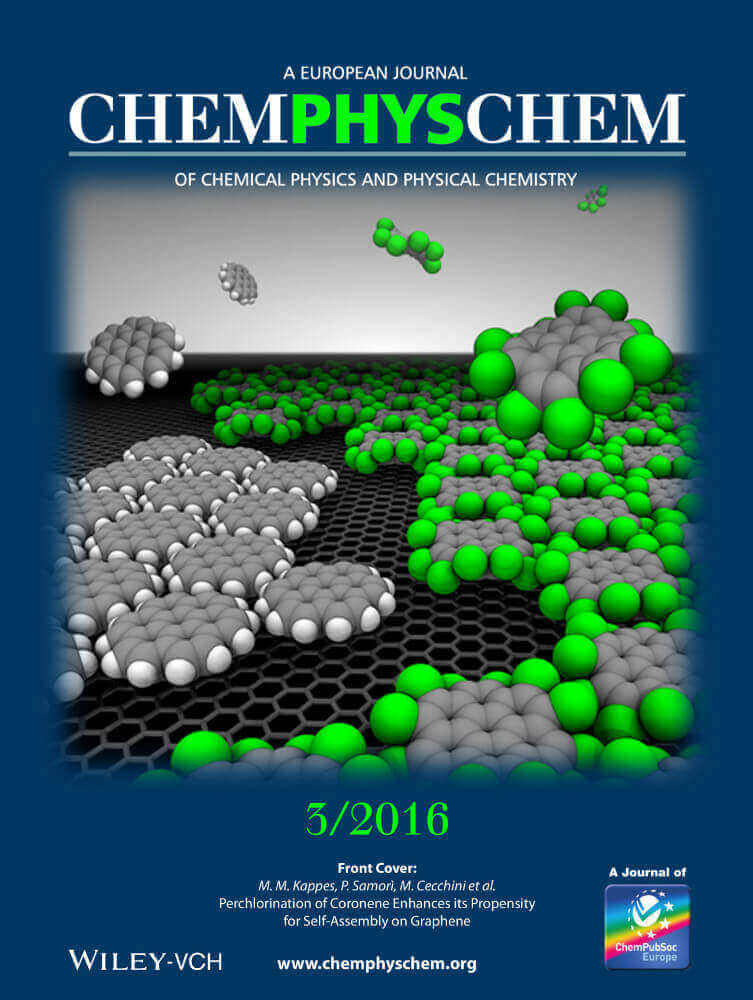Perchlorination of Coronene Enhances its Propensity to Self-Assembly on Graphene
Simone Conti, Maria G. del Rosso, Artur Ciesielski, Jürgen Weippert, Artur Böttcher, Yuyoung Shin, Georgian Melinte, Ovidiu Ersen, Cinzia Casiraghi, Xinliang Feng, Klaus Müllen, Manfred M. Kappes, Paolo Samorì, and Marco Cecchini
ChemPhysChem, 2016, 17(3), pp 352–357.
DOI:10.1002/cphc.201501113 | Find on RG

Abstract:
Providing a quantitative understanding of the thermodynamics involved in molecular adsorption and self-assembly at nanostructured carbon material is of fundamental importance and finds outstanding applications in the graphene era. Here, we study the effect of edge perchlorination of coronene, a prototypical polyaromatic hydrocarbon, on the binding affinity for the basal planes of graphite. First, by comparing the desorption barrier of hydrogenated vs. perchlorinated coronene measured by temperature programmed desorption we quantify the enhancement of chlorine substitution on the strength of physisorption at the single-molecule level. Then, by a thermodynamic analysis of the corresponding monolayers based on force-field calculations and statistical mechanics we show that perchlorination decreases the free energy of self-assembly not only enthalpically (by enhancing the strength of surface binding) but also entropically (by decreasing the surface concentration). The functional advantage of a chemically modulated 2D self-assembly is demonstrated in the context of the molecule-assisted liquid-phase exfoliation of graphite into graphene.
